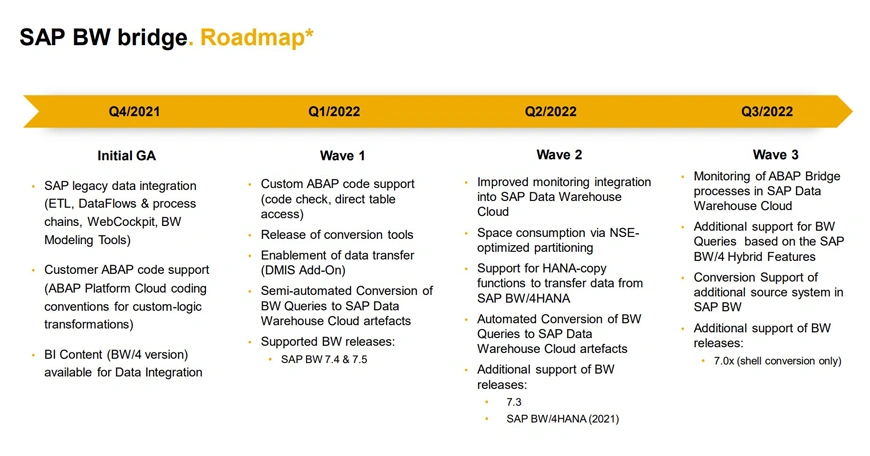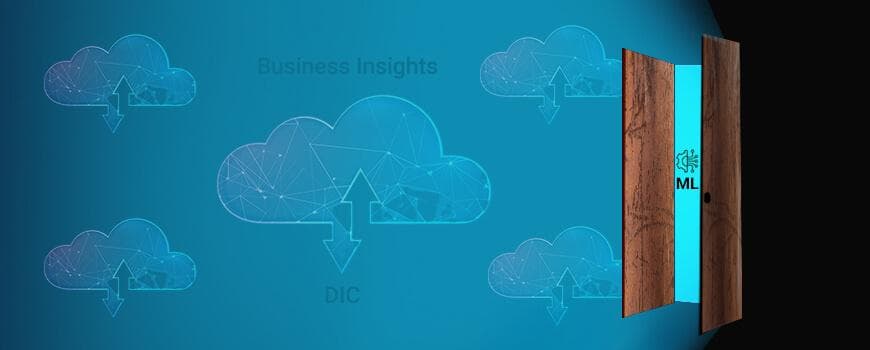BW Bridge: Coupling the best of both worlds
03 May 2022


Deepu Sasidharan
Technical AdvisorDeepu Sasidharan is the Vice President of Analytics at Applexus. He has around 20 years of experience working with various Analytics tools. Deepu has worked with...
Most organizations today recognize the importance of reporting, analysis and interpretation of business data in generating better business outcomes for a sustained competitive advantage. SAP’s on-prem Data Warehousing product SAP BW helps integrate, transform, and synthesize relevant business data from disparate sources of data including external data sources. SAP BW thus equips businesses with the required tools and capabilities to react faster to changing market conditions.
However, Cloud data warehouse-as-a-service (DWaaS) has emerged as an alternative to conventional, on-premise data warehousing solutions. SAP Data Warehouse Cloud (SAP DWC) leverages the rapid scalability, flexibility and innovation capabilities of the cloud to help businesses become truly insights driven.
This brings about the question as to how organizations on SAP BW can move to the cloud while at the same time preserving their existing investments in BW. SAP’s answer to this is a strategic new feature “SAP BW bridge for SAP DWC”.
What is BW Bridge?
BW Bridge for Data Warehouse Cloud is an extension to Data Warehouse Cloud which allows leveraging your existing BW investments. BW Bridge allows you to migrate existing BW data models, transformation, and data sources to the cloud and integrate them with DWC artefacts to provide a self-service data and analytics platform for your users.

Fig: Data Warehouse Cloud and BW Bridge – high-level architecture
Why BW Bridge?

Self-service capabilities for SAP BW data
Many companies want to provide self-service data and analytics capabilities for their business users. However, the current BW landscape does not have features to enable this for non-technical users, letting them end up building their own data marts; extracting and duplicating data. SAP BW Bridge, on the other hand, provides you access to SAP BW data in real-time with the ability to enhance it using easy-to-use data modeling features in SAP DWC.
SAP BW customers who want to leverage a modern Data Warehouse platform with self-service capabilities could benefit from the following DWC capabilities:
- No Code UI: Easy to use no-code UI for data modeling and business semantic layer for abstracting data from underlying data sources.
- Data Sharing:
- Ability to share data using the DWC native Data Marketplace
- Integration with Data Intelligence to provide robust data integration with third party downstream systems
- Consumption from analytic tools
Openness:
- Leverage the in-built adaptors for easy access to SAP and non-SAP data sources. Extend data connectivity with SAP Open Connectors to 100s of external data sources
- Data Warehouse Cloud provides an Open SQL schema which can be used to connect third-party tools for data ingestion and consumption
Transition to Cloud
BW Bridge also provides customers with an easy path to the cloud, allowing them to take advantage of the scalability and openness provided by cloud solutions. It also enables you to leverage your existing team's SAP BW expertise without the need for extensive upskilling.
How to get there?
There are multiple ways to implement BW Bridge for DWC:
- Remote/Shell Conversion:Leverage the Shell and Remote transfer tools to migrate the existing BW artefacts to the cloud with very minimal impact. SAP initially released the transfer tools to facilitate the migration from the existing BW 7. X systems to BW/4 HANA. These tools will be extended to facilitate the migration to BW Bridge. Please check the SAP roadmap for the details on the availability. The first release of the transfer tool is planned to be released on Feb 23rd, 2022 as part of DWC 2022.05. At Applexus, we have successfully leveraged Shell and Remote conversion tools in BW/4 implementations, and are confident that the new migration option available will provide customers an easy transition from their current BW environments to the DWC BW Bridge environment.

Fig: high-level tasks for BW Bridge Remote/Shell conversion
- Greenfield: For customers who want to leverage BW-based modeling techniques, BW Bridge also comes with the standard Business Content which is more aligned with the LSA++ architecture available in BW/4 environments.

Fig: high-level tasks for BW Bridge Greenfield
Restrictions:
BW Bridge for DWC is not a complete migration of your existing BW system to the cloud. For instance, BW Bridge does not provide any direct access for end-users and has to be provisioned via DWC Data builder. You can find the full list of limitations in note 3117800.
Conclusion: Overall SAP BW Bridge for DWC provides existing BW customers an easy transition to the cloud and also helps leverage self-service Data and Analytics capabilities. The conversion tools provided by SAP has flexible options to migrate specific customer scenarios over to BW Bridge including data. Refer to roadmap below for more detailed schedule on the availability of features.

Source: SAP 2022












